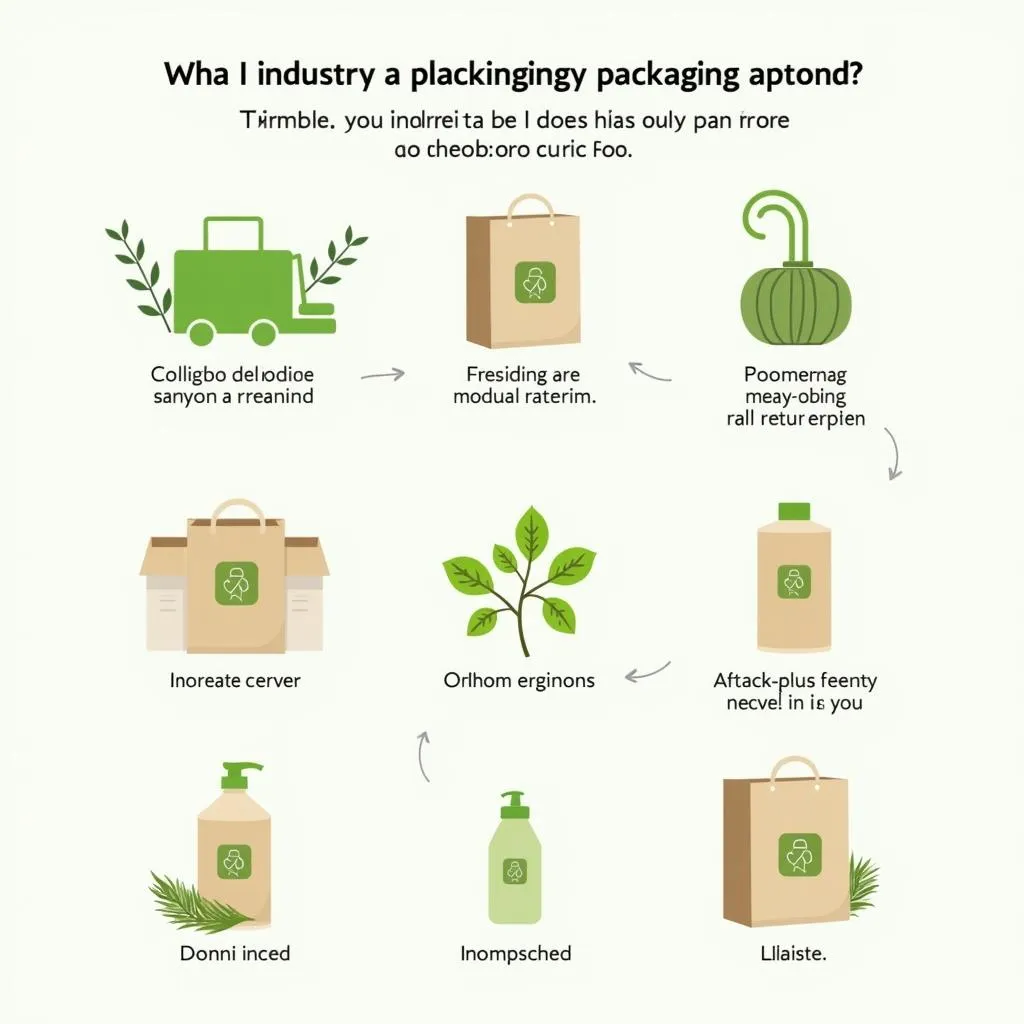The “Summarize Written Text” section in the Speaking & Writing part of the PTE Academic test is an essential skill assessment. It measures your ability to capture the main ideas of a text and summarize it in one sentence. One of the trending topics frequently seen in such exams revolves around “Sustainable Packaging In The Retail Industry”.
In this article, we provide you with sample Summarize Written Text questions on the given topic and provide model answers across different band scores to give you a comprehensive understanding of how to ace this section in the PTE examination.
Why Sustainable Packaging is a Hot Topic in PTE?
Sustainable packaging is an increasingly important topic in today’s retail environment due to the ongoing efforts by businesses and regulatory bodies to reduce waste and limit environmental damage. Given its relevance in the real world, it often appears in PTE exams.
PTE Sample Question: Summarize Written Text
Below is a sample Summarize Written Text question laid out in a format that mimics the PTE test.
Sample Text
The retail industry has become increasingly dependent on sustainable packaging as a means of responding to consumer demands for environmentally friendly options. These solutions involve reducing the use of plastic and other non-biodegradable materials and focusing on recyclable, compostable, or reusable alternatives. Some companies have adopted minimalist packaging strategies to cut down on waste, while others are investing in innovative materials like bioplastics and plant-based packaging. As a result, businesses can not only reduce their ecological footprint but also attract a growing number of environmentally conscious consumers. However, there are challenges posed by high costs and inconsistent supply chains, which may impede large-scale adoption of sustainable practices across all sectors of retail. Nevertheless, more governmental regulations are being introduced to encourage the use of responsible packaging methods in the near future.
Instruction:
Summarize the paragraph in one sentence. Your response needs to be between 5-75 words.
Model Answers for Different Band Scores
To give you a better sense of what a perfect response looks like, here are sample answers evaluated across different scores.
High Score (75-90)
In response to consumer demand and environmental concerns, the retail industry is moving toward sustainable packaging options, such as recyclable and reusable materials, although challenges like high costs and supply chain issues remain barriers to their widespread adoption.
Evaluation:
- Content: Fully captured the main ideas (consumer demand, sustainable materials, business challenges).
- Form: Perfect length (44 words), complies with the word limit.
- Grammar: No errors, proper use of complex sentence structures.
- Vocabulary: Leverages varied vocabulary (“challenges,” “widespread,” “adoption”).
- Spelling: Excellent.
 Sustainable packaging solutions adopted by retail industry due to demand
Sustainable packaging solutions adopted by retail industry due to demand
Medium Score (50-70)
The retail industry is adopting sustainable packaging to reduce environmental harm, though issues with costs and supply chains are impacting large-scale adoption of these solutions.
Evaluation:
- Content: Captures most main points but lacks specificity (e.g., bioplastics and government regulations).
- Form: Perfect length (28 words).
- Grammar: No errors.
- Vocabulary: Somewhat limited but appropriate.
- Spelling: Excellent.
Low Score (Below 50)
Retailers use sustainable packaging to reduce waste, but it is not widely adopted because it is too expensive.
Evaluation:
- Content: Misses critical elements of the passage—no mention of environmental demand or recyclable materials.
- Form: Too short (16 words), does not cover enough information.
- Grammar: No grammatical mistakes, but sentence structure is overly simple.
- Vocabulary: Basic.
Vocabulary and Grammar Breakdown
Here are 10 key vocabulary terms derived from the passage that may help you improve your writing in the Summarize Written Text section:
-
Sustainable /səˈsteɪ.nə.bəl/
Adjective: Able to be maintained or continued without causing harm to the environment.
Example: Using sustainable packaging reduces the impact on the environment. -
Bioplastics /ˌbaɪoʊˈplæs.tɪks/
Noun: Plastics derived from renewable biomass sources.
Example: Bioplastics offer an environmentally friendly alternative to petroleum-based plastics. -
Compostable /ˌkɒm.pəˈsteɪ.bəl/
Adjective: Describes organic material that can decompose and become nutrient-rich soil.
Example: More companies are turning to compostable packaging materials. -
Ecological footprint /ˌek.ə.lɔdʒ.ɪ.kəl ˈfʊt.prɪnt/
Noun: A measure of human impact on Earth’s ecosystems.
Example: The company has taken significant steps to reduce its ecological footprint.
 Minimalist packaging strategies reduce waste and shipping costs
Minimalist packaging strategies reduce waste and shipping costs
-
Adoption /əˈdɒp.ʃən/
Noun: The act of starting to use something new or different.
Example: Widespread adoption of these materials is not yet feasible. -
Government regulations /ˈɡʌv.ən.mənt rɛɡjuleɪʃənz/
Noun phrase: Laws or directives imposed by a governing body.
Example: Government regulations are pushing businesses toward sustainable practices. -
Supply chain /səˈplaɪ čeɪn/
Noun: The series of processes involved in producing and delivering a product to a consumer.
Example: The supply chain for eco-friendly products is still developing. -
Recyclable /rɪˈsaɪk.lə.bəl/
Adjective: Materials that can be reprocessed and used again.
Example: They are making efforts to use only recyclable materials in their packaging. -
Minimalist /ˈmɪn.ɪ.məl.ɪst/
Adjective: Relating to design or style characterized by simplicity and minimal components.
Example: Minimalist packaging helps reduce both material use and shipping costs. -
Non-biodegradable /nɒnbaɪəˌdɪˈɡreɪdə.bəl/
Adjective: Unable to be decomposed by natural organisms.
Example: Non-biodegradable plastics can persist in the environment for hundreds of years.
Conclusion
Summarizing written texts is a key skill that can help test-takers grasp lengthy materials efficiently, especially under the time constraints of the PTE Summarize Written Text section. We have dissected a commonly seen topic—Sustainable Packaging in the Retail Industry—to show how this theme might appear in the exam and what constitutes a high-quality response. Practicing with real-world topics like this will certainly help you hone your skills for a high score.
Be sure to practice regularly, and don’t hesitate to leave comments below for further tips or assistance!